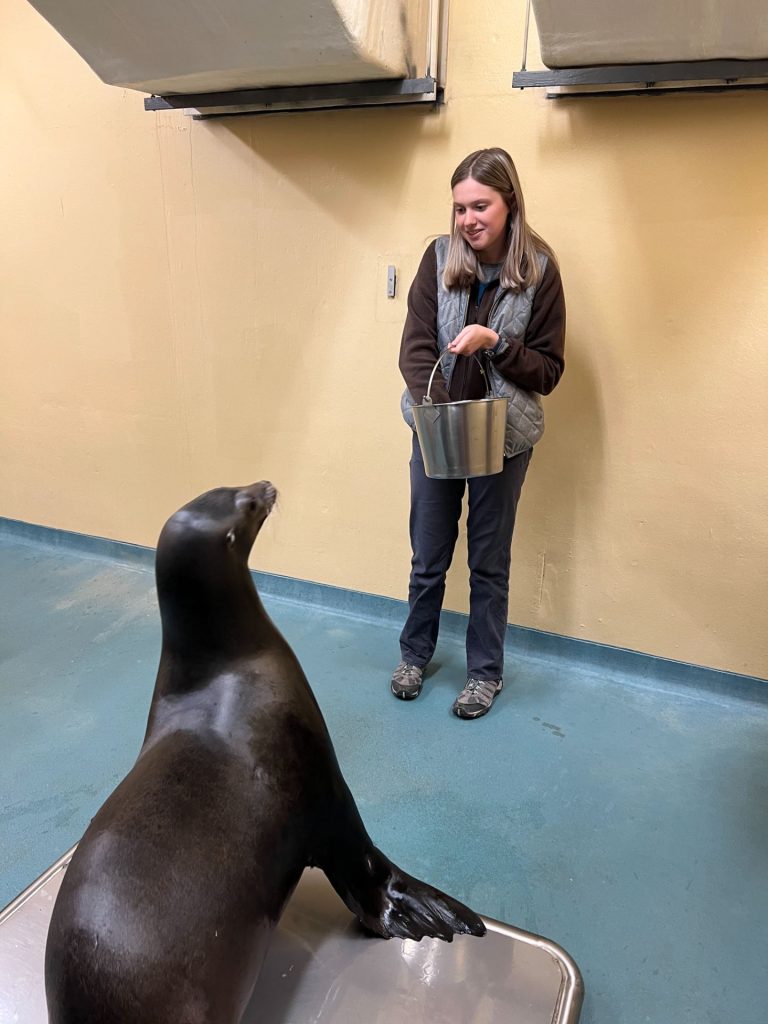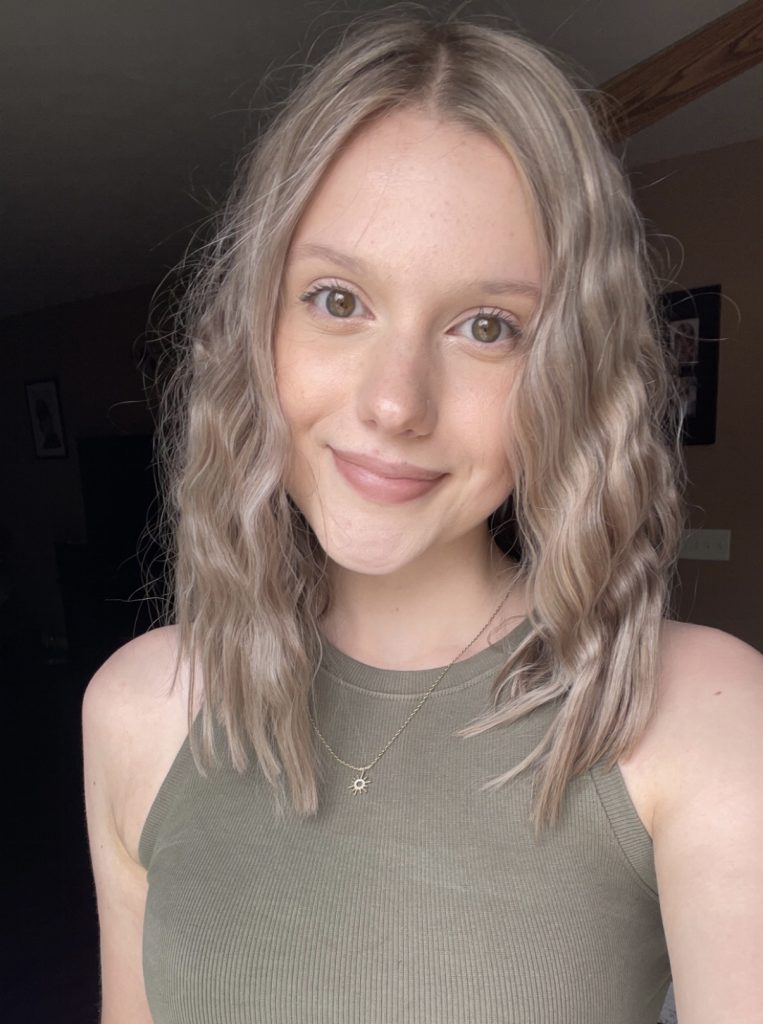Choosing Seneca Park Zoo:
Being a Rochester native, Seneca Park Zoo, home to nearly 100 different species, has always been my home zoo. A couple of years ago, Dr. Chris McKinney, who had worked at the small animal GP my family pets see, transitioned from relief veterinarian to full-time zoo veterinarian. So, as a veterinary student very much interested in a career in zoo medicine, I reached out. And for the past couple of years, as my schedule allowed, I went in for a few days here and there to shadow. This past winter, my schedule finally opened up long enough to facilitate a ~3-week externship, and I took full advantage!
Typical Day:

Canada lynx receiving anesthetized physical exam and survey radiographs.
Each day at the zoo started off similarly enough – review the previous days’ keeper reports for all of the animals housed at the zoo, check in on hospitalized animals in the clinic (if there were any), and then check on any of the animals that had a problem (big or small) flagged in their reports.
Beyond that, there was no “typical day” – which for me, makes zoo medicine so appealing and such a unique challenge. A few days were spent working through planned procedures – an anesthetized full physical/radiographs on a Canada Lynx, annual exams for the Burmese pythons, etc. Others we’d find ourselves bouncing between exhibits as various questions/concerns from the keepers would arise throughout the day. Others yet, we would have a relatively quiet afternoon – allowing me to take full advantage of the veterinary library or review literature to update protocols in advance of the zoo’s AZA accreditation renewal this spring.
And while there was no typical day, the experience as a whole was reflective of what can be expected with a career in zoo medicine – a balance of paperwork/meetings, speaking with keepers, observing the animals, and the actual hands-on clinical work with the animals.

Olive baboon receiving laser therapy treatment
Favorite Memories:
Having learned so much and worked with so many incredible people and animals, it’s impossible to pare it down to one favorite memory or experience. From laser therapy on a baboon, to blood draws on a bearded dragon, to evaluating lameness on a gray wolf, I got to do and see so much. But, some of my personal highlights included the visits to the giraffe barn, working with the sea lions, and Loki (a domestic rat).
About 2 weeks before my externship, the zoo announced the birth of a giraffe calf. And then again, just 2 days before my externship, the zoo announced the birth of a second giraffe calf. And of course, while the calves were incredibly cute and a joy to observe, following Kipenzi’s case (one of the mothers) was particularly memorable. This past summer, Kipenzi was found to have a mass on her jaw that was biopsied and confirmed to be squamous cell carcinoma (SCC). Kipenzi’s care includes scheduled radiographs to assess progression and the application of an immunostimulant as a chemotherapeutic.
Working with the sea lions was another highlight for me. During my externship, there was a flare-up in corneal pathologies. With the sea lions receiving such extensive training and already being conditioned to receive eye-drops daily, I got to have a more hands-on role in this case which was very rewarding. It also led to discussions between myself and the veterinary team on corneal management for sea lions – something we are hoping to potentially explore as a research study in the future.

Feeding/training session with California Sea lions in which we are also able to examine their eyes.
And lastly there is Loki the domestic rat – one of the few patients who didn’t quickly scurry away upon the veterinary team’s arrival. Loki had originally presented for a small mass on his cheek which was drained and debrided. We made several follow-up visits to assess his wound as it healed, and Loki, who liked to climb up our arms and perch on our shoulders during his re-checks, quickly became a favorite patient of mine.
Recommendations:
As cliche as it may sound, my biggest piece of advice is to take advantage of any opportunity that comes your way – be it small animal, large animal, exotics, or zoo! All of the zoo/wildlife veterinarians I’ve had the privilege of working with up to this point, have all emphasized the importance of having a good foundational knowledge in the domestic species. And even in my 3 short weeks at Seneca Park Zoo, I found this to be true – I was constantly relating management of species like wolves, giraffes, elephants, etc. back to that foundation of dog, cat, cow, and horse.
Final Thoughts:
I am so incredibly grateful to the amazing team at Seneca Park Zoo – Dr. Chis McKinney, technicians Robin and Tammy, and all of the keepers and curators I met. Everyone there was not only eager to teach and share their knowledge/experiences, but also incredibly supportive and encouraging. I’ve left this experience with so much new knowledge and many incredible memories that I will take with me as I continue to navigate my journey in zoo medicine.

Erin Guntrum, Class of 2025, is from Rochester, NY and received her B.S. in both Animal Behavior, Ecology, & Conservation (ABEC) and Biological Science from Canisius College (now Canisius University) in 2021. While at Cornell, Erin has been a student technician at the Janet L. Swanson Wildlife Hospital. She has also been a member of ZAWS, SAVMA, and the behavior and therio clubs. Erin hopes to pursue a career in zoological medicine and participate in research related to conservation, behavioral endocrinology, and theriogenology.
